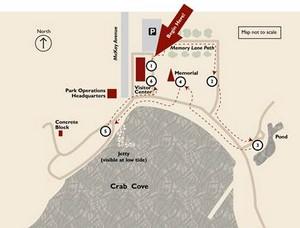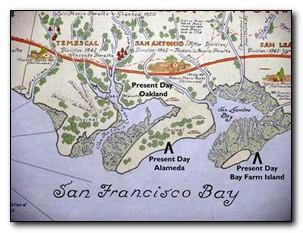
Around 400 C.E., people settled along the shores of a small peninsula that would someday become Alameda. Here in the Bay, fresh and saltwater mixed producing a rich estuary. Native people living here found an abundance of oysters, clams, otters, fish, acorns, soaproot, grasshoppers, and rabbits. To encourage settlement of California, the Mexican government, who had gained control of the area, established the land grant system in 1829. Some of this land was given to Don Peralta, who then gave some of it, including what is now known as Alameda, to his son, Antonio Maria Peralta.

Antonio sold a small portion of his land, the peninsula, to W. W. Chipman and Gideon Aughinbaugh. They saw it as an ideal location for a growing city and began offering free excursions to the peninsula from San Francisco on the boat, Bonita. Passengers were given a free lunch, which included watermelon, to eat under the oak trees. These trips became known as Watermelon Excursions. Potential land buyers were promised one free lot with each lot purchased and built on. In 1854, the township of Alameda was established.

What does Alameda mean?
The literal meaning of Alameda in Spanish is a “grove or lane of poplar trees”. Strangely, poplar trees were not common in Alameda at the time it was named.
Page 2 >>

